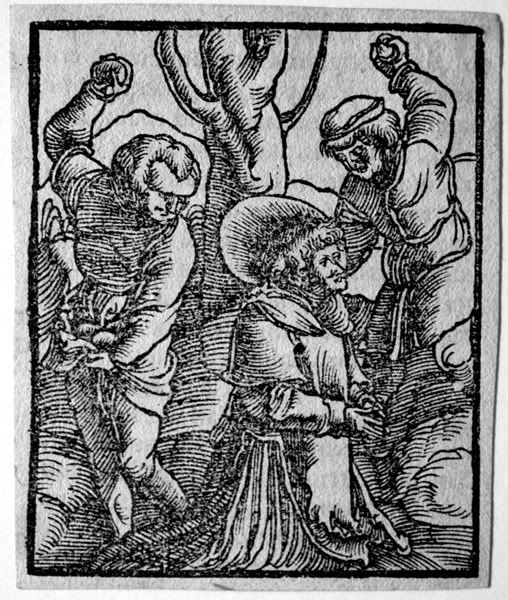Rosanne
TdM- Tarot of the Reformation: The cry against Moral Decay-A Social Commentary through images.
If you read through the discussions on the Reformation and look at the TdM- it seems to me that you can see this time of upheaval and change, reflected in this particular sequence of images. The terms I have used are ones we have put on the events and ideas of the time. The reformation movement began as an attempt to reform the Catholic Church and led to the fracturing of Christendom. It started with Martin Luther in 1517.
My tentative list came about because of of discussions and reading due to jmd's course on the Noblet; and a little Monkey. I present this as an 'interest' and not a concrete explanation of TdM. I look with anticipation to any and all views.
0. Le fou- Moral Decay
1. Bateleur- Sale of Indulgences/Simony
2. Papesse- Veneration of Mary and Cult of Relics
3.The Empress- Isabe[la] Holy Roman Empress of the time
4. The Emperor-Charles The Holy Roman Emperor
5. Le Pape and Benefices
6. The Lovers-Celibacy and the Sacrament of Marriage
7. Chariot-dichotomy of Will and Salvation(earning ones salvation)
8. Justice-Magisterial Reformation
9 Hermit-John Calvin and Christ/Scripture/Grace/Faith/God is needed only
10. Wheel-Political Power/ Radical Reformation
11.Force-Sacrament of Confirmation/laying on of hands
12.Hanged Man-Sacrament of Penance/Confession and (adult) Baptism v.Infant Baptism
13.Death-Sacrament Extreme Unction/last rites
14. Temperance-Wine into Blood of Last Supper debate
15. Devil-Purgatory/Limbo debate
16. Tower-Priestly Hierarchy dispensed with and scripture available to everyone
17. The Star-No intercession or heavenly intermediates between man and Christ.
18. Moon- The debate of the two towers of Belief -Baptism and the Lords Supper.
19.The Sun- Salvation and Free Will
20. Judgement-Particular Judgement( whether you sleep or go straight to your maker)
21 The New Jerusalem. (we have many denominations now- because of the Reformation)
~Rosanne
If you read through the discussions on the Reformation and look at the TdM- it seems to me that you can see this time of upheaval and change, reflected in this particular sequence of images. The terms I have used are ones we have put on the events and ideas of the time. The reformation movement began as an attempt to reform the Catholic Church and led to the fracturing of Christendom. It started with Martin Luther in 1517.
My tentative list came about because of of discussions and reading due to jmd's course on the Noblet; and a little Monkey. I present this as an 'interest' and not a concrete explanation of TdM. I look with anticipation to any and all views.
0. Le fou- Moral Decay
1. Bateleur- Sale of Indulgences/Simony
2. Papesse- Veneration of Mary and Cult of Relics
3.The Empress- Isabe[la] Holy Roman Empress of the time
4. The Emperor-Charles The Holy Roman Emperor
5. Le Pape and Benefices
6. The Lovers-Celibacy and the Sacrament of Marriage
7. Chariot-dichotomy of Will and Salvation(earning ones salvation)
8. Justice-Magisterial Reformation
9 Hermit-John Calvin and Christ/Scripture/Grace/Faith/God is needed only
10. Wheel-Political Power/ Radical Reformation
11.Force-Sacrament of Confirmation/laying on of hands
12.Hanged Man-Sacrament of Penance/Confession and (adult) Baptism v.Infant Baptism
13.Death-Sacrament Extreme Unction/last rites
14. Temperance-Wine into Blood of Last Supper debate
15. Devil-Purgatory/Limbo debate
16. Tower-Priestly Hierarchy dispensed with and scripture available to everyone
17. The Star-No intercession or heavenly intermediates between man and Christ.
18. Moon- The debate of the two towers of Belief -Baptism and the Lords Supper.
19.The Sun- Salvation and Free Will
20. Judgement-Particular Judgement( whether you sleep or go straight to your maker)
21 The New Jerusalem. (we have many denominations now- because of the Reformation)
~Rosanne


